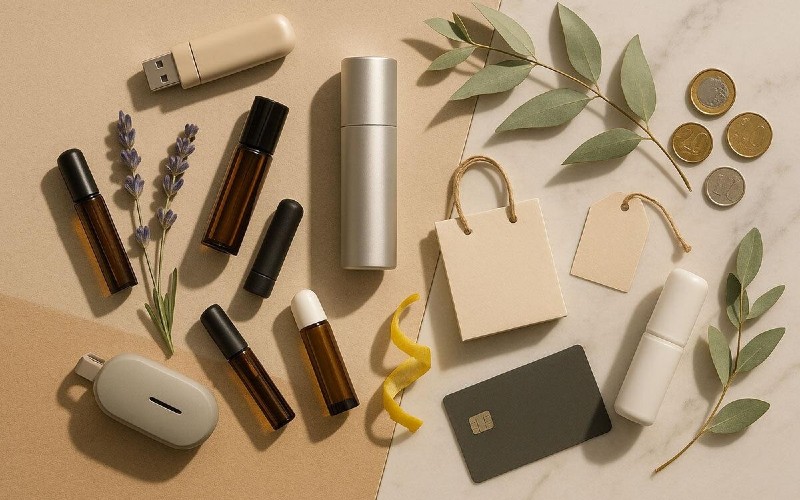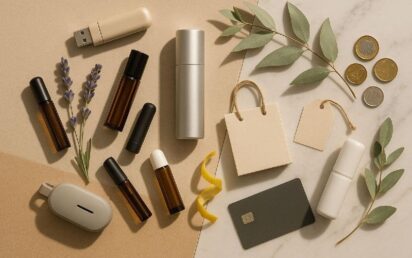Personal well-being has evolved into a field of experimentation over the last few years. From intelligent sleep monitors to inhaled vitamins, consumers are making a larger share of discretionary dollars go toward products that provide a sensory boost or mood reboot. One emerging but under-the-radar phenomenon: portable aroma devices. These tiny diffusers and vaporizing aroma devices are starting to carve out a place in individuals’ daily habits and their wallets.
What this actually suggests is that we could be seeing a change in the way individuals want to invest in well-being: Now, it’s not only supplements or memberships, but products that provide experience, convenience, and a feeling of sanctuary on the go.
The advent of compact aroma devices
Classic aromatherapy has historically been associated with fixed diffusers in domestic or spa settings. However, as homes became more multifunctional and individuals began to appreciate portability, there was increasing demand for devices that release essential oils, fragrances, or aroma blends on the move.
Here’s what the reports say regarding aroma devices and their rise in popularity:
- In 2024, the worldwide aromatherapy diffusers market was worth approximately USD 1.5 billion, and projections indicate a compound annual growth rate (CAGR) of more than 12 % during the next decade.
- Portable diffusers in particular were valued at USD 1.2 billion in 2024 and projected to grow at ~8.5 % CAGR during 2033.
- Concurrently, the wider market for vaporizers (not just aromatics) is being spurred by portable segments. One estimate positions the worldwide vaporizers market at USD 21.9 billion in 2023, with the portable format as a key growth driver.
- In the cannabis industry, portable vaporizers account for the lion’s share of device sales: ~71 % of vaporizer revenue in the U.S. is from portable devices.
These statistics suggest consumer willingness to experiment and pay for devices that provide fragrance or vapor beyond fixed locations.
Why are individuals purchasing portable aroma devices
- Multisensory wellness demand
The shift toward wearable technology, fragrance diffusers, and inhalable well-being indicates that customers no longer keep “tools for health” and “sensory indulgences” separate. Individuals desire utility and mood. Aromatic devices provide both soothing scent distribution and the haptic pleasure of holding or wearing something.
- Discreet, invisible use
A handheld fragrant vaporizer may work quietly at home, in a car, or on the go. Some early adopters of devices report them to be the perfect vape for the game, i.e., you can take your scent ritual with you without bulk or hassle.
- The need for Personalization and control
Rather than purchasing incense or candles, consumers can manage intensity, length, and mix. Transportable units usually permit temperature or diffusion control, which allows an on-demand aroma instead of ambient aroma.
- Home-to-habit spillover
With more people spending time at home, routines built around personal comfort are shifting outward. If you’ve gotten used to scenting your space, why not bring scent with you? The psychological comfort of scent continuity plays a role in purchase decisions.
- Wellness budgets are more flexible
Customers who previously segmented wellness into spa treatments or pills are now viewing devices as a one-time purchase. The notion: buy once, use frequently. It rewrites subscription fatigue or repeat buyout into device-driven spending.
Risks, challenges, and boundaries
No trend is ever without resistance. Pocket aromatic devices have a number of headwinds to contend with:
- Regulation and safety: Labelling, emissions requirements, and purity of essential oils present regulatory challenges, particularly in areas that lack clear categorization for vaporizing aroma products.
- Scent fatigue and overuse: Too much scent, or abuse, can cause nasal desensitization or irritation.
- Device longevity and upkeep: If moving parts, battery life, or refills fail or become a hassle, people will ditch them.
- Consumer mistrust: Aromatherapy still has an air of pseudoscience for some. Overcoming that hurdle is essential for mass adoption.
- Price sensitivity: Wellness spending is discretionary in much of the world. If products are too pricey compared to candles or incense, adoption will stall.
Market signals: What brands should read?
- Innovation will count: More intelligent devices (battery longevity, modular cartridges, integration with apps) will separate victors from mass commoditized products.
- Experience-first marketing: Sensory demonstrations, sample cartridges, and pop-up events can work.
- Subscription + hardware models: Consider: device + refill scents or aroma pods. It balances initial cost with recurring revenue.
- Co-branding with wellness categories: Aromatherapy, mood, sleep, focus — joining broader wellness narratives reinforces legitimacy.
- Global/local balance: Certain fragrances, essential oils, or modes of delivery resonate differently by geography. A handheld device may require region-specific mixtures or materials.
Conclusion: What does it all imply?
Handheld aromatic devices are making their own place within the wellness economy. The rising tide of aromatherapy diffusers, along with the growing vaporizer market, suggests that consumers are poised for products that combine utility with sensory indulgence.
The change here is subtle but potent: rather than opting between “wellness” and “luxury,” consumers increasingly anticipate in one move both. Travel-friendly aroma devices are a reaction to that trade.
If this trend sustains, we’ll see more blur between fragrance, wellness, and personal tech. What began as gadgets may become everyday companions in routines, which is a signal that, for many people, wellness is no longer passive consumption, but active, ambient experience.


